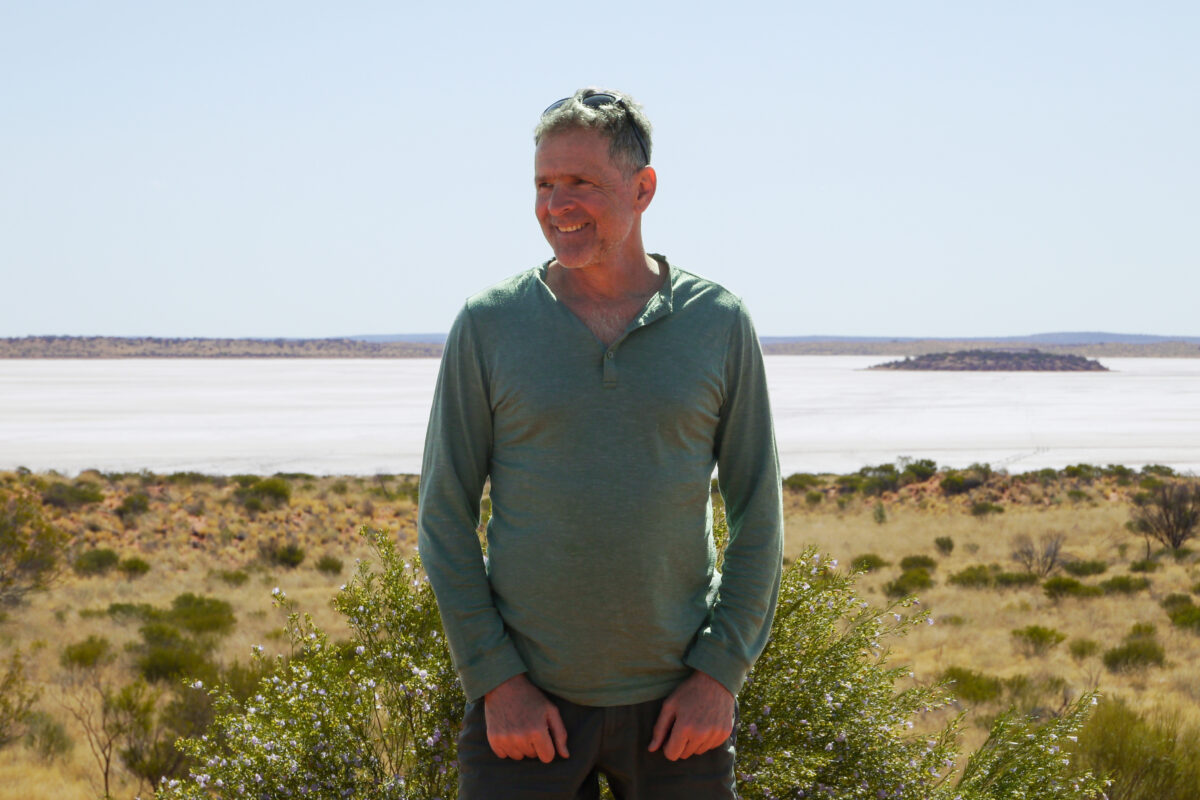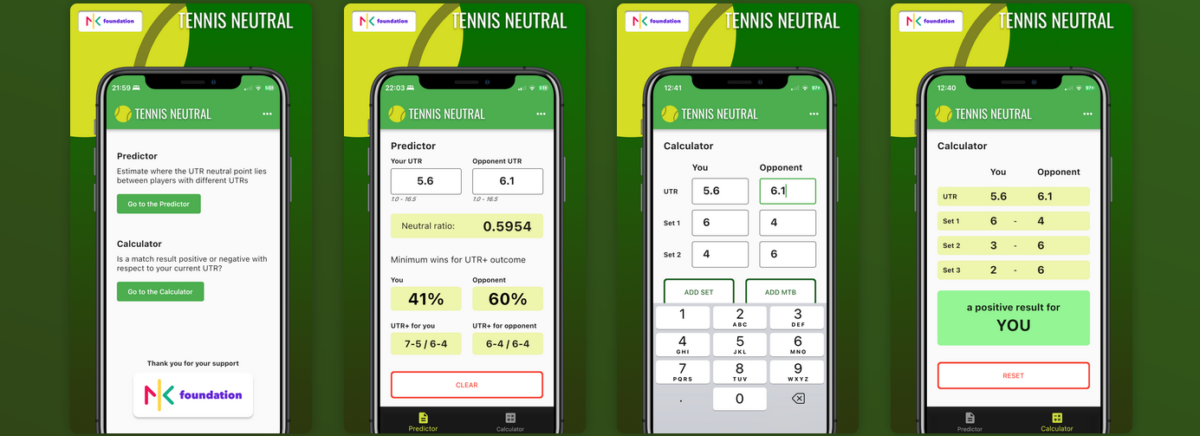
Canberran Ric Curnow is the mastermind behind the Nick Kyrgios Foundation-backed Tennis Neutral app, which aims to reduce stress among young tennis players. Photo: Supplied.
Ric Curnow is not your typical app developer. In fact, he’s not an app developer at all.
The Canberran has worked to support elections in Palestine through the International Foundation for Electoral Systems, acted as a UN peacekeeper in East Timor and is currently working for Australian National University’s (ANU) Tax and Transfer Policy Institute. But creating an app for competitive tennis players has been a first for him.
Ric’s son used to play competitive tennis. So when peak Australian tennis body, Tennis Australia, replaced its long-standing player rating system with the global Universal Tennis Rating (UTR) in early 2022, he took notice. “Kids were getting very, very stressed and were just walking away from matches saying, ‘No, I’m not going to risk my UTR playing this person,'” he explains.
The UTR rates all players on the same scale from 1.00 to 16.50. This rating is then used to predict the outcome of matches with a ‘neutral point’ determined for each player per match-up.
In practice, the new system meant winning a game would no longer automatically improve a tennis player’s rating. Instead, they had to surpass an unknown ‘neutral point’.
Ric saw a clear solution to the confusion and stress being caused. “I said to Tennis Australia, ‘Look, just tell people where the neutral point is,'” he recalls.
Tennis Australia declined. “I said, ‘Well if you don’t do it, I will’ and then Tennis Australia said, ‘You can’t, it’s too complicated. It’s an algorithm.'”
Ric stayed true to his word and spent the next month collating several thousand match results and then used a process called linear regression to develop an algorithm.
At this point, Ric approached a handful of PhD students from Columbia University in the US and some masters-level students at the ANU for a second opinion.
“The Columbia guys and the ANU guys came up with almost exactly the same algorithm and I was just going to give that algorithm away,” Ric says.
When others told him they’d be willing to pay for the idea if developed into an app, Ric pitched it to the Nick Kyrgios (NK) Foundation at no cost. He intended the foundation would then use any proceeds made from the app to continue to work towards its goal of building a sporting and gym facility for disadvantaged and underprivileged children in Australia, which would also provide food, beds and safety.
“I didn’t want to make a profit out of it,” Ric says. “I didn’t want to be cashing in on people’s stress basically.”
Once the foundation agreed to pick up the app, Ric took the project to ANU’s TechLauncher program, which offers course credit to students who help develop solutions to real-world issues.
Over the next months, five ANU Masters of Computing Science students volunteered their time (especially Kehui Xu who Ric says went above and beyond) to develop a fully-fledged app.
Canberra-based UI specialist Robert Bleeker then gave the app a final coat of paint and made it compatible with Apple devices and just like that, it was ready for the NK Foundation.
“We’re immensely grateful that the Tennis Neutral team has chosen our foundation to gift the app to,” NK foundation head Christos Kyrgios says.
“And we’re immensely proud to be distributing a tool to help young players better manage their development.
“We encourage you to give it a go and make a donation to the foundation at the same time.”

The Tennis Neutral app demystifies the previously hidden ‘neutral point’ which Ric says has been causing stress and confusion for young players. Photo: Supplied.
The now-released Tennis Neutral app allows players, coaches or parents living in countries which use the UTR system, including Canada, the US and Australia, to plug in two player ratings and see the ratio of games the algorithm predicts the players will win. Users can also input a match result in addition to the two player ratings and determine instantly which player has improved their UTR and which has not.
“It’s just been terrific the way that so many different people in so many different groups and organisations have supported it, because it’s a volunteer exercise,” Ric says.
“It’s been done for charity and with the wellbeing of our kids in mind.”













